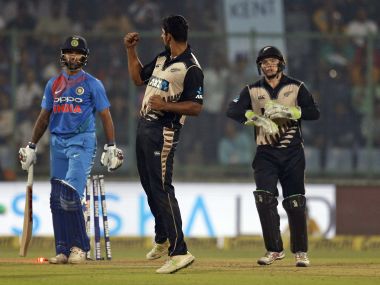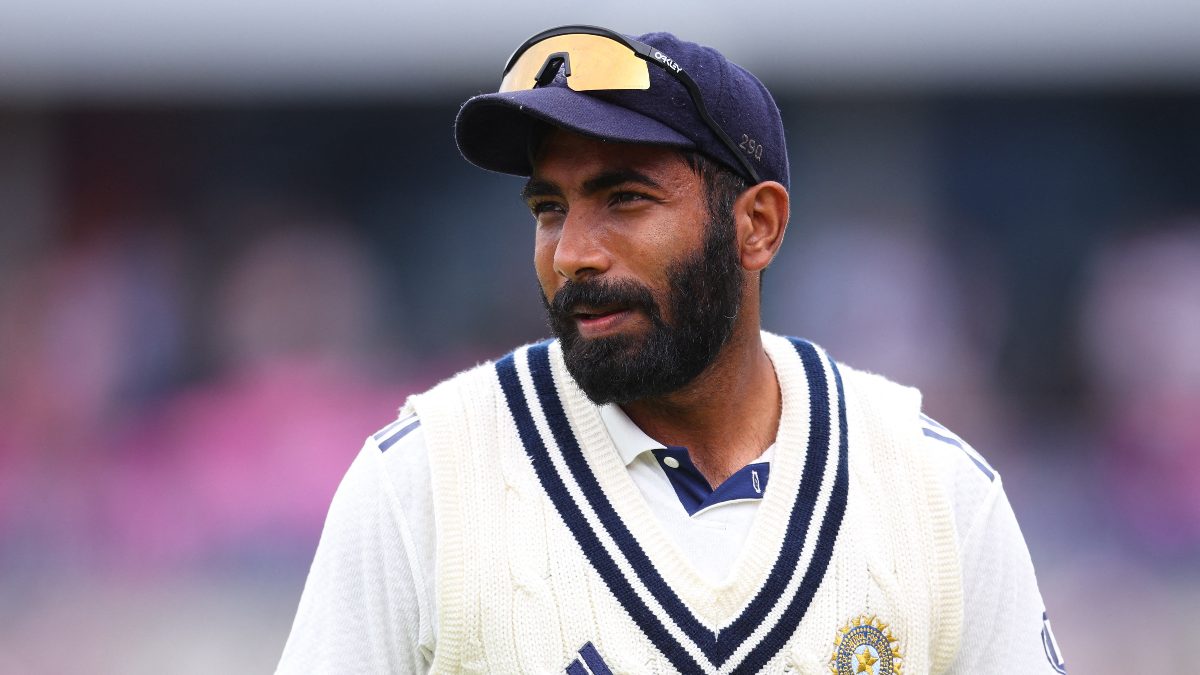As much as cricket can be termed a team game, it remains a game defined by partnerships between two cricketers, who are forced to adapt and adjust their own game according to the other’s form. A batting partnership involves its own challenges — that of understanding the non-striker and moulding one’s game according to his capability. The other partnership in cricket remains an undermined one, but when seen in the larger context of the game it holds an equal, if not a more integral responsibility to the fortunes of the game. The bowling partnership. Two bowlers bowling in tandem, focused on not undoing the great work being done by the other. [caption id=“attachment_4199013” align=“alignleft” width=“380”] New Zealand’s Ish Sodhi, center, celebrates the dismissal of India’s Shikhar Dhawan during their first T20I. AP[/caption] The T20I series between India and New Zealand, which concluded 2-1 in favour of India, saw a bowling duo that was successful in both controlling the batsmen and in bamboozling them over after over. Ish Sodhi and Mitchell Santner not only succeeded in checking the flow of runs in the middle overs by tweaking their line and lengths according to the situation, but also managed to defy the Indians by preventing them from entering a comfort zone while they were bowling. Against the best players of spin, that remained their ultimate victory. In the three T20I games, India managed a cumulative score of 425 for the loss of 15 wickets in 48 overs, the third match having been reduced to an eight-over affair. In that, the pair of Sodhi and Santner bowled a total of 20 overs between them, giving away 150 runs and picking up six wickets in the process, at an economy of 7.5 runs per over, which is by no means an easy feat in the shortest format of the game. In short, they bowled a whopping 42% of the total overs bowled by New Zealand in the three games, whilst conceding just 35% of the total runs made by India! Even though Santner was able to scalp just a single wicket, he stuck to the basics and cleverly changed the angles of the deliveries when he felt that the batsmen were looking to go on a rampage. He opened the bowling for New Zealand in the first T20I, containing the batsmen and troubling them with his short of a length deliveries, his turn and the occasional bounce off the pitch. As Rohit Sharma attempted to defend, he was delivered a ball that turned square from the off stump, confusing the batsman in the process. As Shikhar Dhawan yearned to charge down the track, Santner shrewdly shortened the length of his delivery, forcing the Delhiite to change his plans and knock it off for a dot ball. When Sodhi joined the proceedings, it remained a case of stark contrasts — while the openers were punishing Tim Southee and Trent Boult, they were more respectable towards the spinners, knocking it off for the odd single with the occasional boundary. The two wickets by Sodhi in the first game, that of Dhawan and Hardik Pandya remained a leg-spinner’s delight. As Dhawan advanced to charge down the pitch, a googly bowled from outside off stump hindered his progress whereas Pandya was beaten by Sodhi’s turn and bounce — a forward defensive attempt was checked by a ball that gripped off the surface, only to find the outside edge. In the second T20I match, Sodhi began with an economical spell, going for just eight runs in his first two overs against batsmen who are strong power-hitters of the ball. And then began the carnage. As MS Dhoni tried to attack, he was constantly beaten in flight. As he tried adjusting, the ball drifted in to spin late. As he tried to break away, a clever mix of variations was what was offered. Length balls were bowled. Balls around the middle and leg stump offered discomfort. As Dhoni managed a six over long-on, a short ball by Sodhi followed. With the balls constantly being bowled near his body, Dhoni hardly got a chance to flex his muscles with ease, taking almost 28 deliveries to settle down, by when the match was well out of reach for the Men in Blue. As Dhoni was put under discomfort, Santner picked up Virat Kohli with a delivery that fired in to the captain. The spinners had performed their task to perfection; earning kudos from all around. Even in the curtailed game, the spinning wizards bowled a plethora of deliveries that spun towards the off stump or bounced after turning square — which all contributed to the failure on the part of the Indians to garner momentum in the early overs of the game. The first over of Santner and Sodhi went for 7 and 13 respectively, with the latter also managing to grasp on to the wicket of Kohli, pocketing him with a good length delivery that was pulled over to mid-wicket. Even if the Indian batsmen did hit them for boundaries, an interplay of variations and street-smart thinking prevented them from mastering the spin duo and they remained unable to hit them according to their will. For batsmen that are considered the best players of spin, their trouble to get away from the stronghold of both Sodhi and Santner, which was evident in the T20I series, merely gives a glimpse of the effectiveness of the duo.
For batsmen that are considered the best players of spin, their trouble to get away from the stronghold of both Sodhi and Santner, which was evident in the T20I series, merely gives a glimpse of the effectiveness of the duo.
Advertisement
End of Article


)




